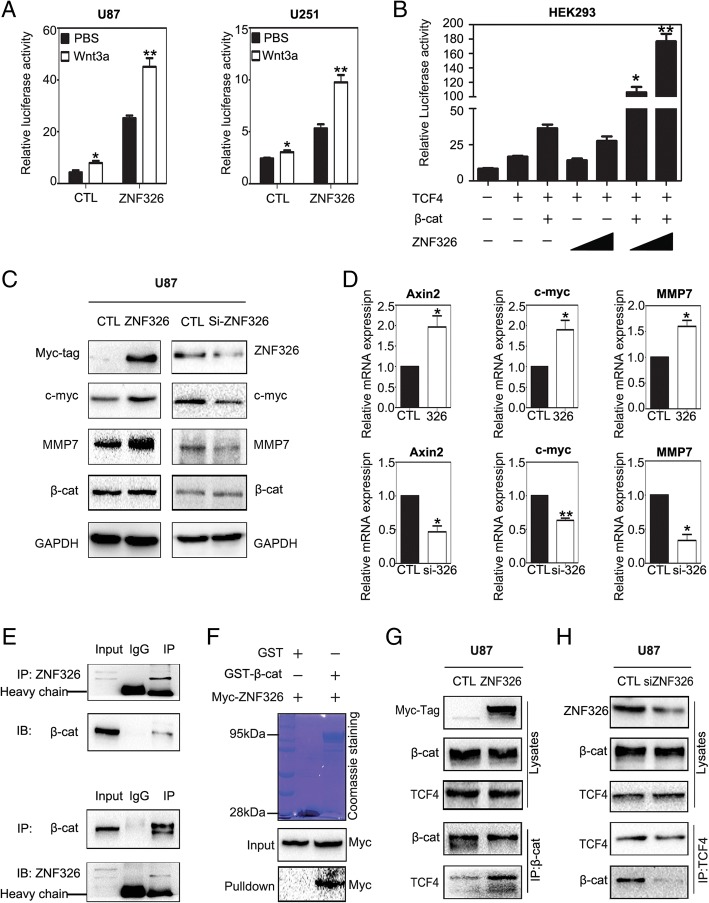Fig. 3.
ZNF326 is a positive regulator of the Wnt pathway. a, b ZNF326 overexpression activates Wnt signalling. The Wnt TOPflash reporter was measured in U87 and U251 cells transfected with ZNF326 plasmid and an empty vector (negative control, CTL) and subsequently treated with control or Wnt3A-conditioned media for 6 h (a). On the basis of transfection of β-catenin and TCF4 in HEK293, TOPflash activity was significantly up-regulated after transfection of ZNF326 in a dose-dependent manner. Cells were treated with Wnt3A-conditioned media for 6 h (b). c, d The expression of ZNF326 was up-regulated or knocked down in U87 cell line; 48 h later, cells were lysed, Wnt-related genes and total β-catenin expression subsequently were assessed by immunoblotting (c) and RT-qPCR assays (d). GAPDH serves as a loading control. e, f ZNF326 directly interacts with β-catenin. Cell lysates from U87 cells were subjected to immunoprecipitation with anti-ZNF326 or anti-β-catenin antibody, and control IgG; precipitates were analysed by immunoblotting (e) In vitro. Purified Myc-ZNF326 and either GST or GST-β-catenin were incubated with glutathione sepharose for 6 h; precipitates were analysed by immunoblotting (f). g, h Endogenous ZNF326 enhanced the β-catenin-TCF4 combination. U87 cells were transfected with ZNF326 plasmid (g) or siRNA-ZNF326 (h). Relative interaction amount between β-catenin and TCF4 were detected by immunoprecipitation. Columns: mean numbers. Bars: S.D. (*: P < 0.05; **: P < 0.01)

